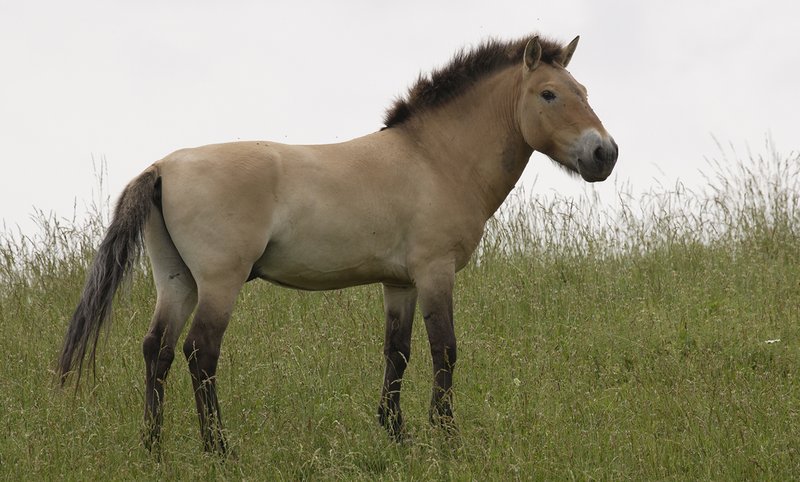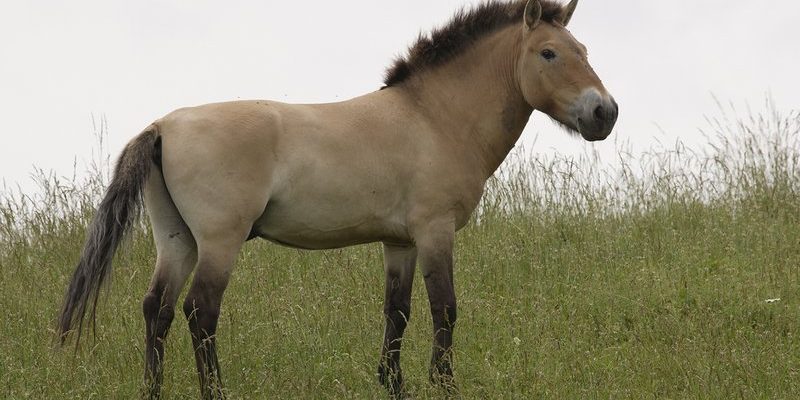
Imagine sipping coffee while discussing this unique horse, often regarded as the last true wild horse on Earth. With its sturdy frame, wild mane, and stocky build, the Przewalski’s horse tells a captivating story spanning thousands of years. Let’s dive into its evolutionary history, exploring where it fits into the family tree of horses, the challenges it faced, and the conservation efforts that have brought it back from the brink of extinction.
Origins of the Przewalski’s Horse
The Przewalski’s horse, or Equus ferus przewalskii, is believed to have evolved around 2 million years ago. This species diverged from the common ancestor of all modern horses. To put it simply, think of it as the great-great-grandparent of the horses you see today. Unlike domestic horses, which were tamed by humans for work and companionship, Przewalski’s horses have remained wild and adapted to survive in harsh environments.
These horses originally roamed across vast areas of Central Asia, particularly in the steppes of Mongolia and northern China. Unlike their domesticated relatives, they developed distinctive traits that helped them thrive in the wild. Their thick, toughed-up bodies and short, erect manes provide an edge against the biting winds and punishing weather. They’re like nature’s armored vehicles, perfectly crafted for their environment.
Discovery and Naming
In the late 19th century, these wild horses caught the attention of explorers and scientists. Russian explorer Nikolai Przewalski is often credited with bringing this horse to the world’s attention, although local populations knew about its existence long before. He conducted several expeditions across Mongolia and collected invaluable data, including specimens that were later described scientifically. The species was named in his honor, making it the only horse species to have never been domesticated by humans.
Physical Characteristics and Adaptations
The Przewalski’s horse is easily identifiable by its unique physical traits. They are generally smaller than domestic horses, standing around 12 to 14 hands tall (that’s about 4 to 5 feet at the shoulder). Their fur is a striking tan color, featuring a dark stripe down their backs, and they possess smaller, rounded ears. This distinct appearance is more than just aesthetics—it’s an adaptation to their environment.
One key adaptation is their digestive system. Przewalski’s horses have a highly efficient way of processing tough grasses, which are the primary food source in their natural habitat. Their stomachs are designed to ferment food efficiently, allowing them to extract maximum nutrients from fibrous plants. This is crucial for survival in the often scarce grasslands they inhabit.
Social Structure
Socially, these horses are fascinating too. Przewalski’s horses live in small herds, typically comprising one stallion, several mares, and their offspring. This protective family unit helps them defend against predators, which include wolves and eagles. Within the herd, the stallion plays a crucial role in maintaining order and safety, guiding the group to food and water sources while keeping an eye out for dangers.
Challenges Faced by the Przewalski’s Horse
Despite their robust adaptations, the Przewalski’s horse faced significant challenges throughout history. As humans expanded into their habitats, these horses encountered a series of threats. Overhunting and habitat loss due to agriculture and urban development pushed the species towards the brink of extinction.
In the 1960s, they were declared extinct in the wild. It’s almost a heartbreaking twist in their story, with the last remaining individuals living in zoos and reserves around the world. Their plight is a reminder of the fragility of nature and how quickly a species can vanish.
Conservation Efforts
Fortunately, conservation efforts turned the tide. Scientists and animal welfare advocates worked tirelessly to save the Przewalski’s horse from complete extinction. Breeding programs were established in zoos, and efforts to reintroduce them into their natural habitats began.
By the late 20th century, these efforts began to bear fruit. Przewalski’s horses were reintroduced into Mongolia, where they once roamed freely. By 2011, they were officially recognized as “endangered” rather than extinct in the wild, thanks to the combined efforts of global conservation initiatives.
Current Status and Future Prospects
Today, the Przewalski’s horse population is growing, with thousands of individuals living in both captivity and the wild. Conservationists continue to monitor their progress closely. This species serves as a symbol of successful conservation efforts, proving that with enough dedication, we can bring back even the most endangered species.
However, the fight isn’t over. Climate change poses new challenges that could impact their habitats. As the *steppes* experience shifts in climate and ecosystem dynamics, ongoing research is critical to ensure these resilient horses can adapt and thrive long into the future.
Role in Ecosystems
Przewalski’s horses also play an important role in their ecosystems. By grazing on grasses, they help maintain the balance of their habitats. This contributes to the health of the grasslands and supports other wildlife, creating a dynamic interconnection within the ecosystem.
Przewalski’s Horse vs. Domestic Horses
So, how do Przewalski’s horses compare to their domesticated cousins? For starters, Przewalski’s horses have a more robust build, shorter mane, and a stockier appearance. They’re also known for their wild instincts—unlike domestic horses, they haven’t been bred for docility. This makes them less suited for riding or working with humans but emphasizes their unique adaptations.
Horses today have undergone centuries of selective breeding, resulting in various breeds tailored for specific purposes, from racing to work. In contrast, Przewalski’s horses have remained true to their wild roots, embodying the spirit of untamed nature.
Why Przewalski’s Horse Matters
Understanding the evolutionary history of the Przewalski’s horse is more than a lesson in biology—it’s a call to action. Each horse represents a story of resilience, adaptation, and the pressing need for conservation. They remind us of our responsibility to protect nature and its inhabitants.
So, the next time you hear about wild horses, think of the Przewalski’s horse, the last link to a wild past that still survives against all odds. Their ongoing journey offers hope for the future, emphasizing the importance of biodiversity and conservation.
As you sip your coffee, remember that every effort we make to protect wildlife is a step towards ensuring that stories like that of the Przewalski’s horse continue for generations to come.

